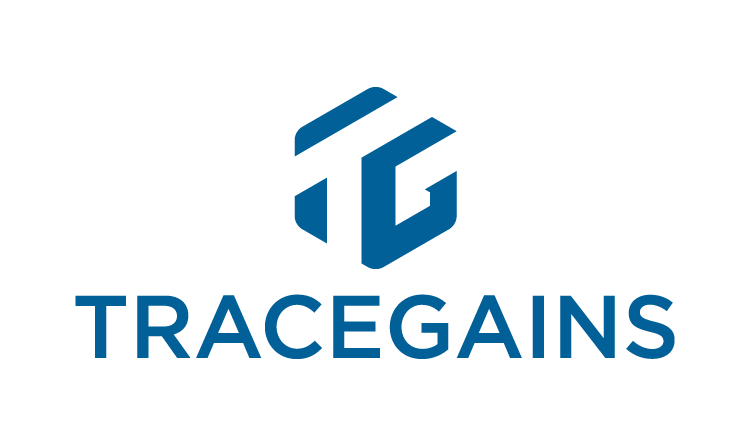Promotional Features
Shore up your supply chain agility
Supply chain agility is an acquired skill – and it takes a lot of work to hone it. Most food and beverage brands find out the hard way that better supply chain agility depends on better supply chain visibility.
Superior supply chain dexterity means continuously evaluating supply chain partner performance.
More is better
The broadest possible dataset you can secure will be the ideal information source moving forward. And the quality of the data that companies possess certainly matters, but maintaining the most extensive possible dataset is even more critical. Forbes.com highlights the significance of data, saying: “At its very core, data tells us what we need to do next. Data exposes inefficiencies and disadvantages. It reveals truths about our habits and what we might do next. It opens windows to opportunity while offering a glimpse into the future. Data shines a light on what’s possible and has the power to make it a reality. But only if you use it in the right way.”
One of the things businesses are focusing more on is shared visibility with supply chain collaborators. There’s a growing awareness of the need to make data more accessible across the supply chain. As a result, companies are beginning to offer greater access to their datasets to focus on achieving greater efficiency and unravelling supply chain kinks.
A company that responds rapidly to challenges is readily adaptable to today’s supply chain demands. But many companies learned they could not keep up with unexpected changes when the Covid-19 pandemic upended the global supply chain. As a result, they couldn’t rely on alternative suppliers, and they folded under the pressure. This supplier myopia is risky, at best.
Knowing immediately which steps to take is the only way to respond rapidly to supply chain issues. And the only way to do that is to have access to all available supplier and market data. The most successful companies install contingency plans to adjust their supply chain needs. But brands must be still ready to improvise when faced with the unexpected. Food and drink businesses can plan for disruptive events, but sometimes might still need help. First, however, they must be able to think on their feet.
Catch things before they fall
We hear all the time that it’s only possible to start making changes when you know where you stand. In other words, before starting work on your supply chain agility, assess your current status. It’s easy to promote directives about what needs to be changed and made better, but your words will fall on deaf ears if you don’t have facts to back up your strategy.
The McKinsey Institute recently interviewed operation practice partners Knut Alicke and Dan Swan on the company’s podcast, where they discussed how the global supply chain teeters on a possible inflection point.
During the episode, Swan said: “I heard one senior executive say this is basically the scariest environment imaginable from a supply-chain perspective. Inbound material costs are going up exponentially; some categories or some commodities are up 50%, 60%, and 70% year over year, which obviously has major implications on the cost structure.”
He highlighted a prevalent anxiety about inflation that cuts across industries. This apprehension drives so many companies back to the drawing board to re-evaluate their positions:
● Review partnerships. First step? Review any supplier partnership structure. It can uncover any risks tied to those relationships. It is surprising how few companies do this. When they fail to properly evaluate existing collaborations, they put the entire company at risk.
● Embrace an ounce of prevention. The best way to insulate a business from a supply chain crisis is to keep it from happening in the first place. There’s nothing worse than knowing a crisis could have been avoided altogether. But companies must pay more attention to the partnerships they’ve formed with other brands that leave them vulnerable.
Think globally, but verify locally
Business leaders must consider the global scale of their operations. However, they can’t keep their head in the clouds. They must remain aware of what’s happening globally. They must also check in with their local operations frequently to ensure they reach specific performance metrics. If they don’t spend the time checking on their local dynamics, they might overlook emerging threats.
Diligent surveillance of local product flow saves a company a lot of grief when it comes to ensuring they don’t inadvertently ship subpar products to their customers. There’s a lot of reputational risk to pushing out products that don’t meet the customer expectations. Companies that overlook the small details can miss big problems.
The best solution incorporates lot-level data within the larger global picture. When you integrate both data points, you get a clearer representation of supplier performance.
Context remains critical
Data for data’s sake isn’t as valuable as it appears. Anyone can sweep documents into a pile and call it good. But the truth is that until you evaluate the data within the proper context, it’s not worth much.
Artificial intelligence continues to play a greater role in how organisations review and understand data. It can scan an organisation’s document flow and extract the most valuable nuggets. This makes the data more effective and can add context surrounding supply chain capabilities. However, until they complete this process, business leaders will be stuck with a scattershot of information that isn’t much help.
Manual searches waste time
It’s harder than it sounds to sift through accumulated data for specific insights. For example, typing in search queries for data manually is time-consuming and doesn’t usually produce the desired results. To make matters worse, manual searches might appear to provide relevant data only to pull bits of unrelated information. In other words, manual database queries can produce erroneous or misleading data.
Instead of exposing themselves to this risk, businesses should invest in curated data. This pivot might mean using AI to scan for vital intelligence. Data engineers could also be hired to comb through the data. Of course, either of those options requires additional investment, but it’s typically money well spent.
Focus on supplier transparency
Simply reviewing a supplier’s products and pricing isn’t enough anymore. Instead, today’s supplier must communicate directly with their customers.
The first thing a business should review is how suppliers and buyers exchange information. It’s reasonable to ask suppliers to communicate frequently and provide order updates. However, such details should be manageable for them, and they should leap at the opportunity to add another customer. If they aren’t doing this, then it might be the wrong supplier.
One of the hurdles business managers and owners face is figuring out which suppliers they can trust. It all comes down to how those suppliers respond to enquiries and how they’ve adapted for former clients.
A few of the things to look for in a supplier relationship include:
● Accountability. One of the signs of a great supplier will own up to their mistakes and hold themselves accountable.
● Capability. Any business needs a team that can meet its challenges and will rise to the occasion when called up.
● Product knowledge. A supplier might not know as much about the specific products and market a client business operates in. Still, they should have a reasonably good understanding of what’s going on within a given industry.
● Cultural fit. Some suppliers adapt well to a company’s culture, while others don’t quite blend in. Learning to tell the difference between the two can help save a lot of heartache. And a business shouldn’t settle for a supplier simply because they offer the best prices; they need to blend in with the culture established.
Diversifying your supplier base is the single best way to fight back against supply chain threats. However, it also helps to organise suppliers into a single network.
The network
In the past, businesses maintained independent relationships with each supplier, but modern companies work differently. Today, it’s necessary to work with multiple suppliers across a stable network. This change has taken on extra importance in recent years because any given supplier is subject to disruptions. But a network adds a layer of stability. If one supplier can’t come through for any reason, the others can pick up the slack.
Building new supplier relationships means building out a supplier network – and the growth of that network means greater stability across the whole supply chain.
To find out more about the TraceGains Networked Ingredients Marketplace, contact Dan McGlynn on +44 (0)113 868 1212/dan.mcglynn@tracegains.com or visit https://www.tracegains.com





